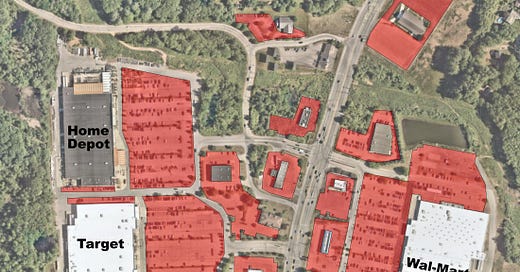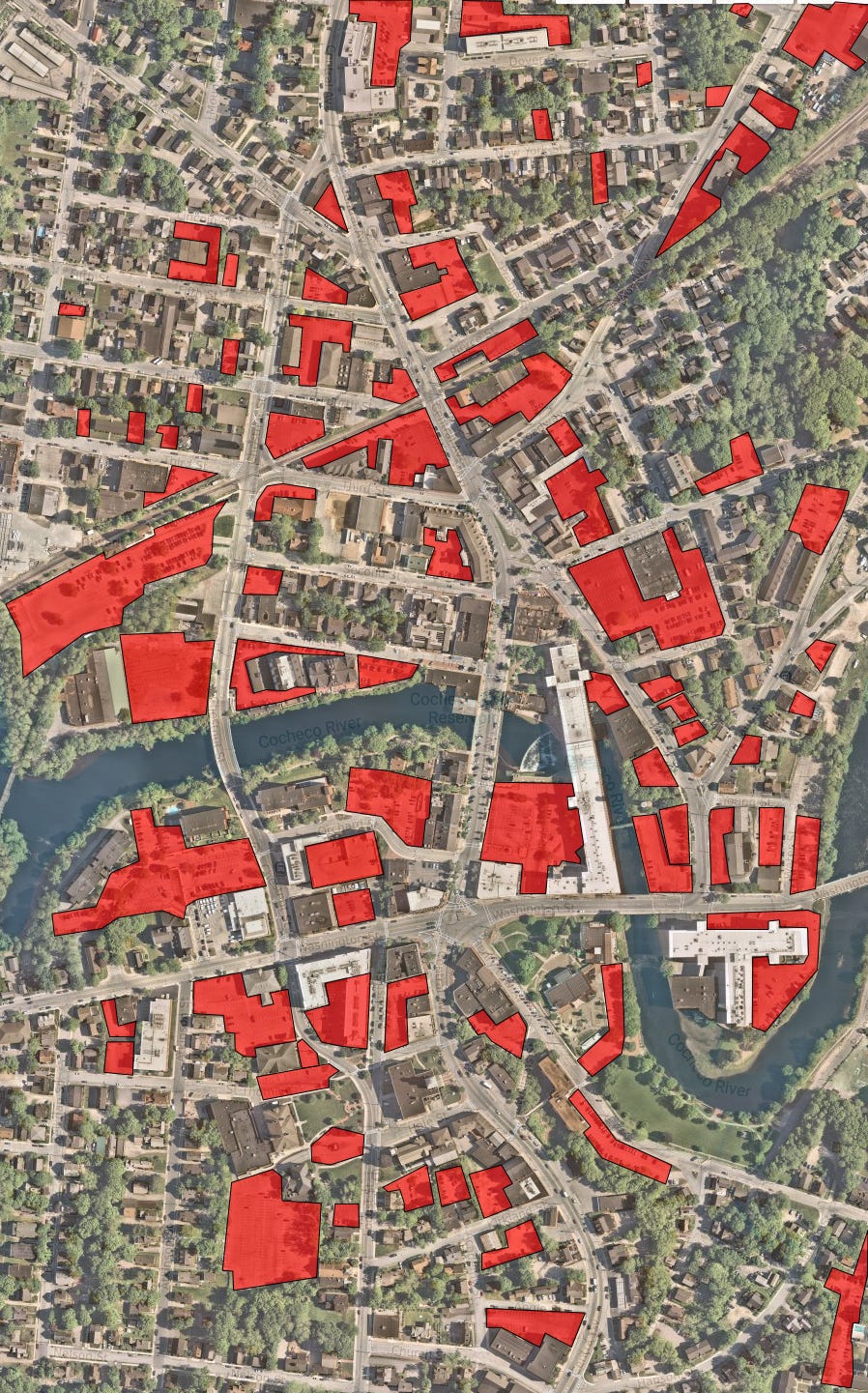02/10/2025 Monday Meeting Recap
We looked at some examples of how parking can negatively impact the walkability of our places
Walking is the human default for transportation and has many benefits to our cities and towns, especially in creating stronger communities and more desirable places. Yet, I see several cases in the Seacoast region where we are letting parking get in the way of good walkability. As part of our recent examination of Henry Law Avenue, our group took a tangent on parking and parking research. in our most recent meeting we continued that discussion to explore the many ways that parking can actually make walking around our cities and towns much harder than it needs to be. In both small and big ways, parking can have an impact on how a place feels to walk around and can even make some parts of your city more dangerous for people walking.
Creating Distance
Parking takes up space, space creates distance, and distance can make things less walkable. This is usually the result of a design choice where we build excessively large parking lots or place the parking in front of a business. There are cases of large parking lots that connect to an actual walkable space such as a shopping mall or a downtown (think parking garage). Though I would say that the parking in almost all of these cases will still create a distance that impairs walkability.
This is an overhead image of the Wal-Mart in Somersworth. Its parking lot and the lots for the businesses in front of it put it nearly 500ft back from the nearest sidewalk along High Street (a stroad). If you wanted to walk between Wal-Mart and Home Depot it would take you 11 minutes to cover the half mile of distance that the parking and other car oriented infrastructure take up. For reference you can walk from Juniper Kitchen on 3rd Street in Dover all the way to Wing-Itz at Kirkland Street in 9 minutes. And yes, that does mean that the parking lots at Wal-Mart, Target, and Home Depot are so large we could fit another downtown within them.
Besides being a pretty wasteful land use pattern, this is a very uncomfortable place to be if you are not in a vehicle. Walking here is loud and dangerous, and the parking lots act as a no-man’s land with nothing to go to and nothing to see. It is quite difficult to have a productive or pleasant walk here. Perhaps big box stores could put the parking below the retail space (since the lots are roughly the same size) and that would allow us to cut our land use in half, while also cutting out the distance in between our places.
We see the same thing happen at some places in Downtown Dover where the parking pushes the businesses away from each other and places where people are walking. Jeff Speck, author of the book Walkable City, refers to these locations as “missing teeth” in an otherwise walkable area. They create dead spaces in your downtown that no one wants to go to. Some examples in Downtown Dover would be Janeto’s Supermarket building and the lot next to TD Bank. In the case of Janeto’s, that’s extra distance to walk while carrying heavy groceries. Like I said earlier, this is a design decision and can be mitigated by putting the parking behind the businesses like they do for employees at Breakaway Cafe or for guests at the Downtown Dover Inn.
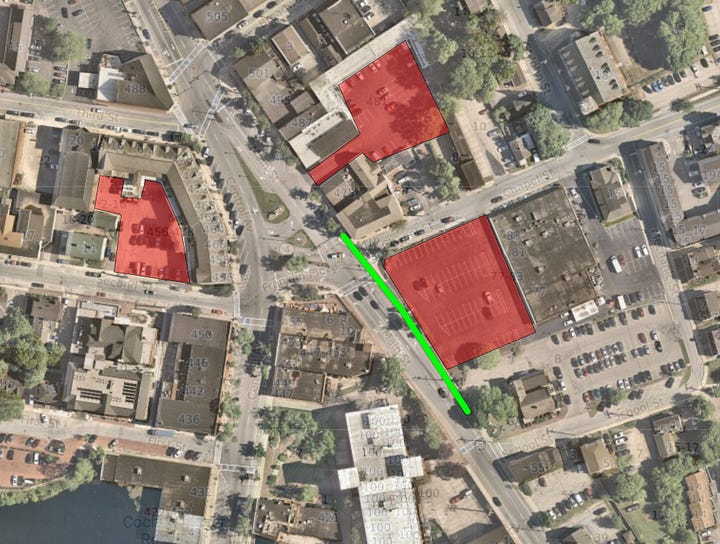

Getting in the Way
Parking also consumes land that could be used for sidewalks or bike lanes, both of which contribute to walkability. In some cases, like we detailed in our review of Henry Law Avenue’s redesign, we are giving wide sections of our streets to angled parking, yet the sidewalks (sometimes only on one side of the street) are only 6’ in width. There are also sections of downtown, such as segments of Chestnut Street, that have similar sidewalk width, and two lanes of parking along the street. In these examples the parking is given much more space and consideration than the walking infrastructure around it.


I also wanted to mention something that I recently saw in a Not Just Bikes video. In the Netherlands, where the producer lives, there is a new trend of building parking at sidewalk level instead of at street level. This changes the way an empty parking space feels when walking. When you don’t have a grade difference or a curb between parking, unused parking is given to the other use. In this example, the unused parking gives space to the sidewalk, not to the street. Check out the video if you want to see this in action, the relevant section starts at 3:29.
Blocking Sight
Crosswalks in walkable areas often have street parking around them, and this can make using the crosswalk less safe. If there is a parked car in front of the crosswalk it can block the sight lines of both the drivers and pedestrians, preventing them from successfully negotiating for the right of way. Removing obstacles to give clear visibility to crosswalks is a process called “daylighting, and I’ve made a video about two cases in Downtown Dover where this process could make crosswalks safer.

The two cases detailed in the video are not the only examples around the Seacoast region and even if you are the driver, this setup is not good. People suddenly walking into view from a parked car into your travel lane is not a fun experience. I think this scenario is one where we should be more than willing to sacrifice a parking spot or two in order to increase walking safety, especially in downtowns.
Building Ice Walls
It’s been snowing quite a bit this winter and if you have been walking around downtown Dover you will know that the sidewalks are not at their best. Outside of sections of ice, or large puddles of slushy snow, the snow plows are clearing the parking areas and creating a wall of ice between the street and the sidewalk. The parking spots are cleared and dry (somehow even more so than the sidewalks), but once you get out of your car you encounter a tall barrier that must be navigated around. This separation makes it harder to navigate our cities and can be a difficult obstacle for elderly or for parents with children in two.
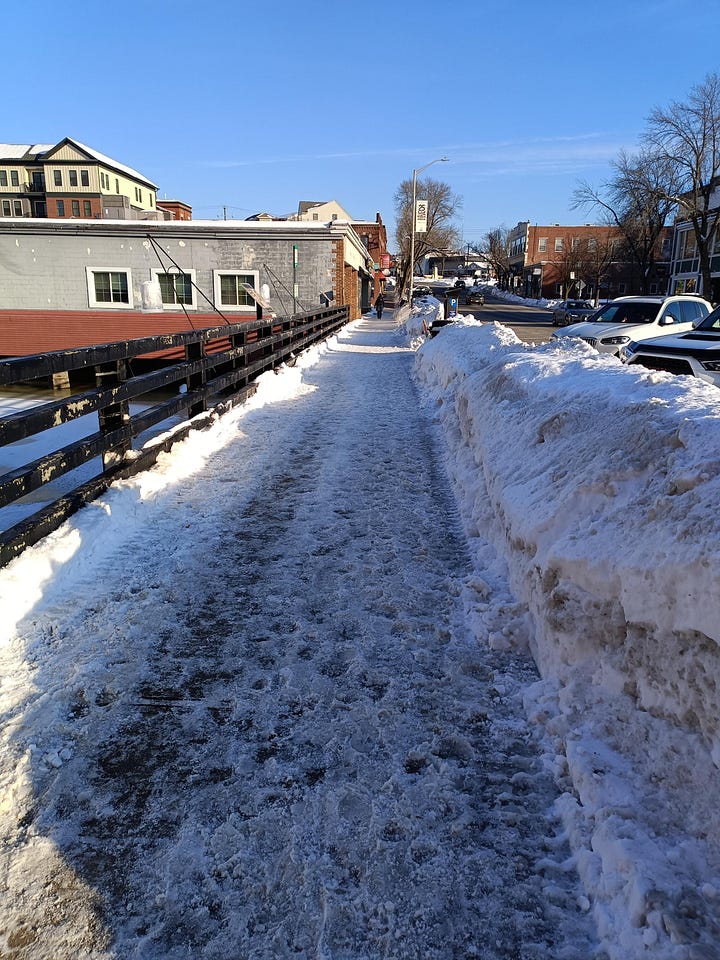
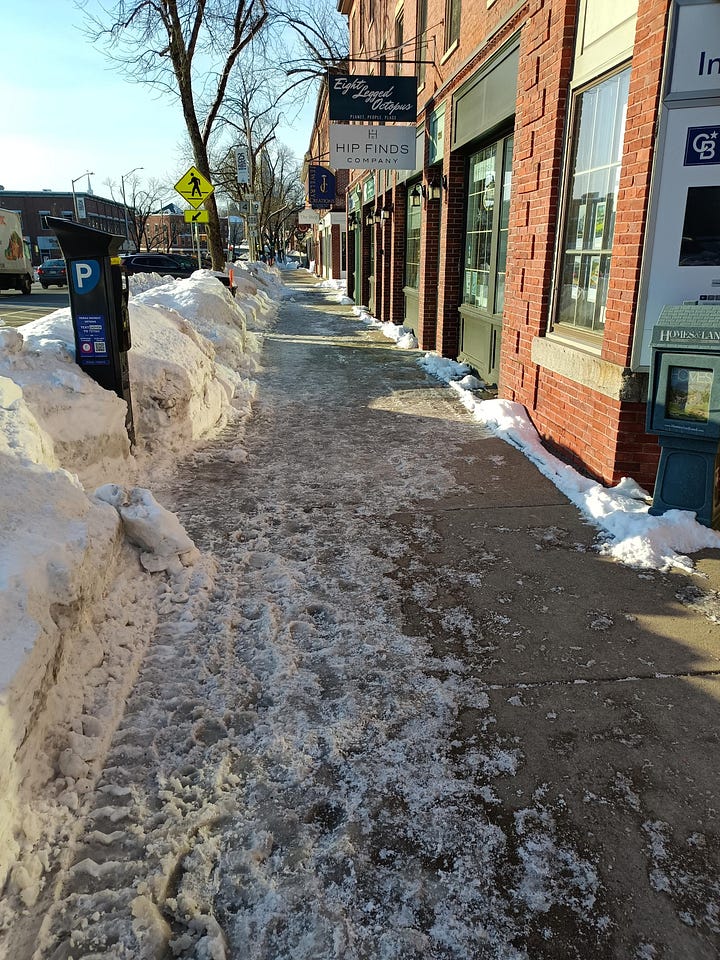
In the worst cases, the snow is removed from parking spots, and pushed onto sidewalks. I don’t blame the snow plows here, they are just following city guidelines and policy. However, I think we can come up with a better solution than just building up these barriers every time we get flurries. If we could designate a few parking spots as “removed snow goes here” locations, then instead of pushing the snow in between the parking and sidewalk, we could push it to these specified spots. Yes, we lose a couple of parking spots during the snow season, but we preserve the ability to move between the sidewalk and the street.
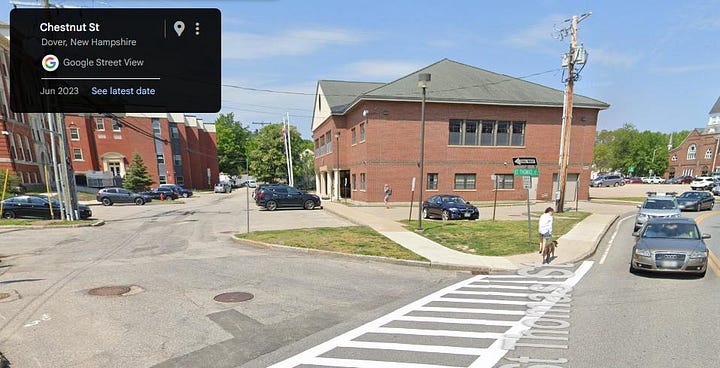
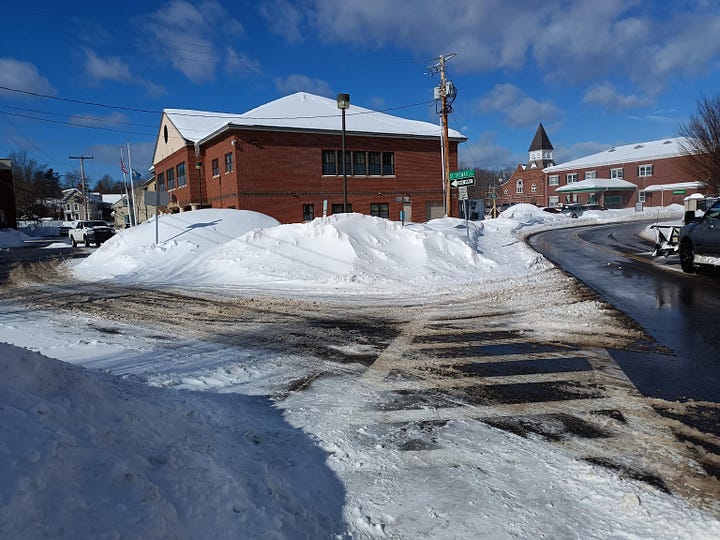
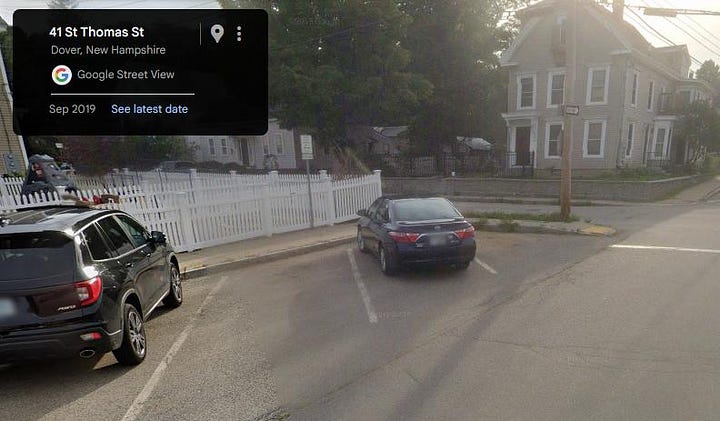

Wrapping Up
There are ways of providing parking that doesn’t get in the way of good walkability, but we need to be aware of where it causes problems. With just a few tweaks to how we design or do things we can preserve or improve walkability in our cities. I have written in the past about how investing in walkability creates a such a high return for a city and I’ve also made comments on parking as well. You can check out those other articles if you are interested in learning more.

